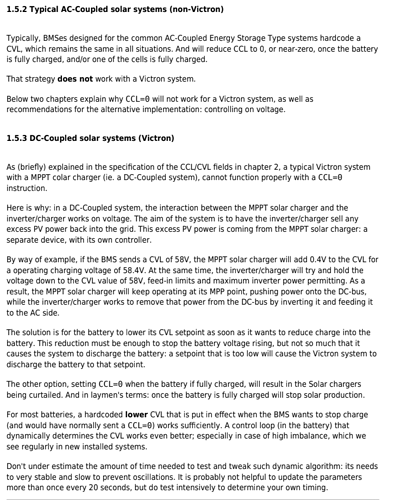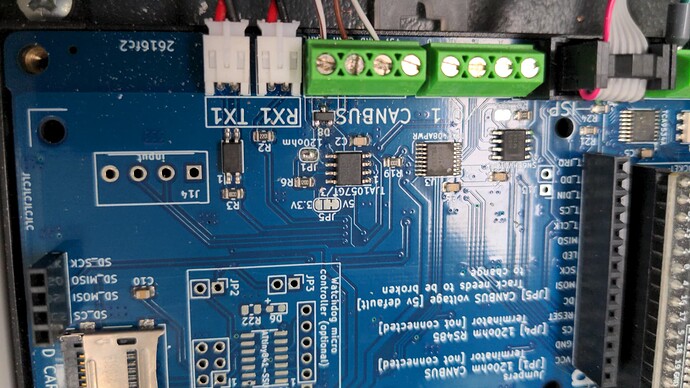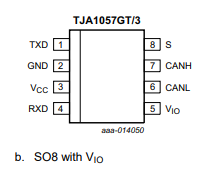Hi All,
I’ve got a Victron multiplus 2 connected to a Rpi running Venus OS with a PiCan3 hat. Everything is communicating via canbus fine and dandy to the diybms controller.
I’ve found an issue with the DVCC and wondering if anyone else has had the same issue.
My CVL is 28V (7S @ 4V per cell). My DCL and CCL are both set to 20A.
With everything nicely balanced it’s charging and nicely tapers off the current and switches from CC to CV at end of charge. But I have noticed the the CCL does not drop to 0A to tell the multiplus its at end of charge?
In theory it should never go above 28V as the multiplus should always charge to 28V and stop. However we all know lithium iron batteries do or can go out of balance over time and the passive balancing should keep everything in balance. But sometimes they can go very out of balance and passive balancing isnt enough.
I did some experiments over the weekend.
First test. When my pack was fully charged (28V) I set the CVL to 27V. The multiplus started to discharge which was great but the CCL was still at 20A. This should drop to 0A.
Second test I did with the pack fully charged at 28V was set one of the cell monitors to think it was at 4.1V and others at 3.8V as a pack voltage of 26.9V. To simulate a poorly balanced battery. The BMS allowed the multiplus to charge because it was below 28V. NOT GOOD. Again the CCL should have dropped to 0A. It should work with both pack voltage and cell voltage.
The only other level of protection above this is my shunt trip.
I have another ESS with a MP2 but the BMS is a batrium.
The way this works is both pack and cell voltage. It means you have 3 levels of protection which I really like for both upper and lower limits.
High Limit (fully charged) - BmS and Charger control - normal operation - safe limits
High High Limit ( Overcharged) - BMS control- Abnormal operation- CCL 0A
High High Limits (Dangerous) - BMS control- Unknown condition/WTF is going on - operate shunt trip immediately!
At the moment I have 2 levels normal and Dangerous. And balancing if you class that a form of control?
Be great if the software/code could be amended to reduce CCL to 0A in an overcharged state. This is obviously needs to be done over CANbus.
Let me know your thoughts.
Cheers
Gareth

 . Atm I’m using.
. Atm I’m using.
